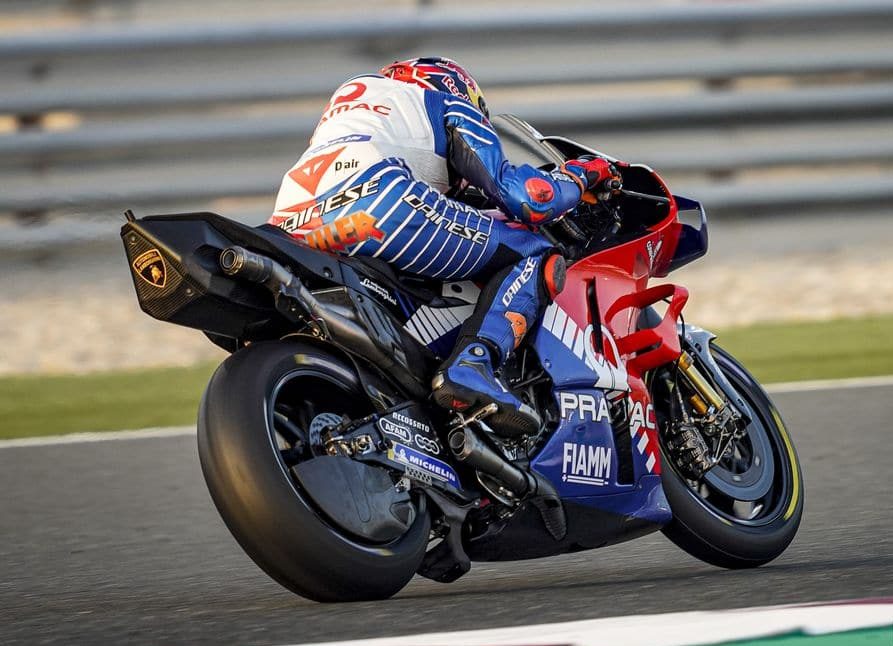The eyes of the MotoGP paddock have been on Ducati over the past few seasons, as they have deployed surprising and controversial new engineering ideas on the Desmosedici GP19. But one of the elements that hasn't stopped getting talked about is the Holeshot Device. And we got a photo of it.
This first came to public attention when Ducati riders stopped at the pit lane exit at Sepang, during 2019 pre-season testing, and turned a lever positioned on the triple clamp (shown below) before practicing their starts.
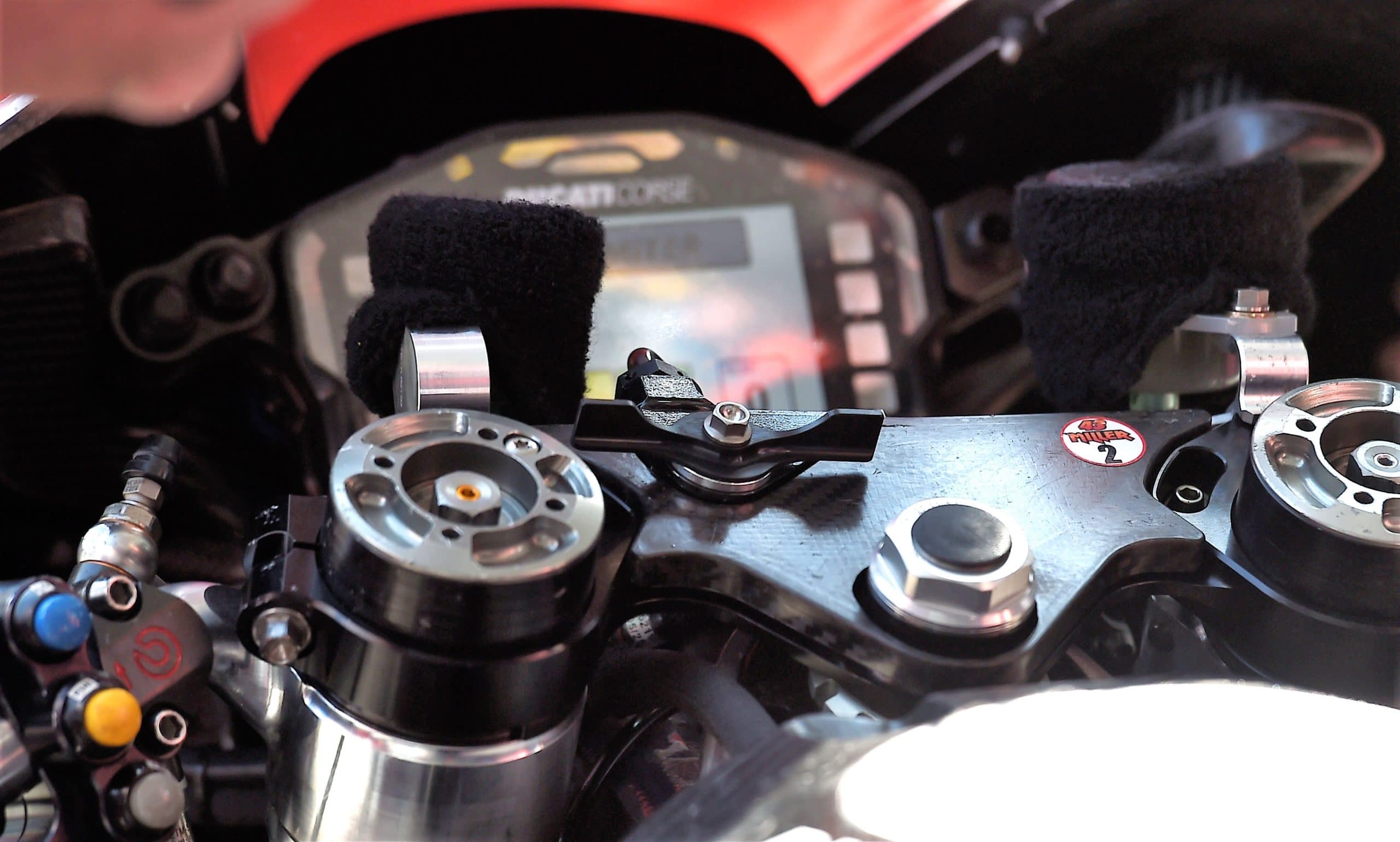
The butterfly-shaped dial on the upper triple clamp allows you to activate the device for departure
With fans and media alerted to its existence, television cameras began keeping tabs on the Ducati, zooming in on the handlebars whenever possible. Each time we saw one, we learned a little more about it. That the lever requires a certain effort to engage the device. That the pilots compress the suspension when they have stopped, to facilitate the rotation of the lever. And that the rear of the motorcycle is significantly lower when the device is engaged.
Public knowledge of the holeshot device also confirmed rumors that had been making the rounds in the paddock. As more information leaked, we could begin to piece together the history of the coin's development and how it worked.
A glimpse into History
But first, a little history. The holeshot device first appeared at the 2018 Motegi round, where Jack Miller used it on his Ducati Pramac. Miller used it for the remainder of the season – with the exception of Phillip Island, where braking for Turn 1 is not demanding enough to disengage the mechanism after the start – and in 2019 it appeared on all the Ducati GP19.
The device works as follows: before the start of the race (or a test start during free practice), the driver uses his weight to compress the suspension, then turns the lever to engage the mechanism. The mechanism then locks the rear suspension in the low position for the duration of the departure. When the rider arrives at the first corner, and brakes hard before entering the corner, this sudden braking lifts the rear, which in turn triggers the release mechanism, which releases the device and returns the rear suspension to its normal operating condition.
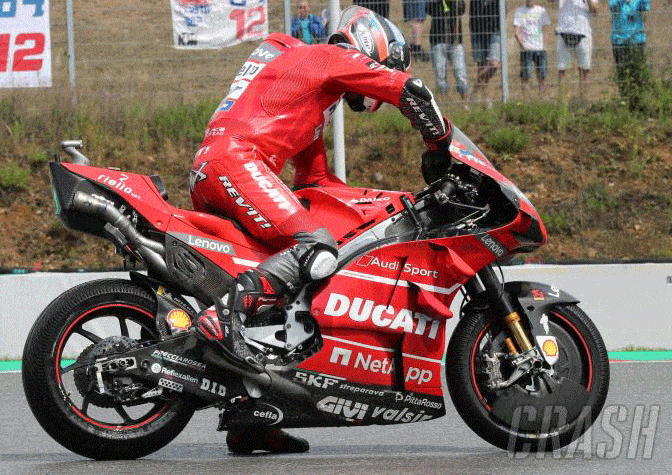
It's somewhat surprising that Ducati's holeshot device locks the rear suspension down, rather than raising it. Holeshot devices are common in motocross, but in this case they lock the front fork down. The idea is to keep the front end lower to help avoid wheelies, making it easier to control the bike when taking off. Aprilia has a similar system, that we had already observed in the smallest details.
But Ducati's device does the opposite: lowering the rear rather than the front. Lowering the rear does indeed decrease wheelies, although this may seem counterintuitive to some. It's simple: by lowering the rear, you lower the center of gravity, thus reducing the tendency to wheelie. This is similar to what is done in motocross: lowering the center of gravity. Lifting the rear may feel like you're putting the front wheel down, but of course not. By raising the rear, you increase the center of gravity, especially since you also raise the rider. Taller bike, higher riding position, more wheelies.
The fact that the device lowers the rear suggests that it serves a slightly different function and that Ducati is not only looking to reduce wheelie, but also to increase rear wheel grip. By lowering the rear of the motorcycle, they place more weight on the tire, creating more grip. The fact that the Ducati is longer and lower than most other bikes (also the reason the bike still suffers from understeer) may explain why Ducati seeks rear grip.
What does it look like ?
So, what exactly is this device? We see in the photo below that the device resembles a miniature shock absorber which is located where the shock absorber would normally be connected to the swingarm. The adjustable link is replaced by a hydraulic (or mechanical) cylinder assembly that connects the suspension foot to the swingarm.
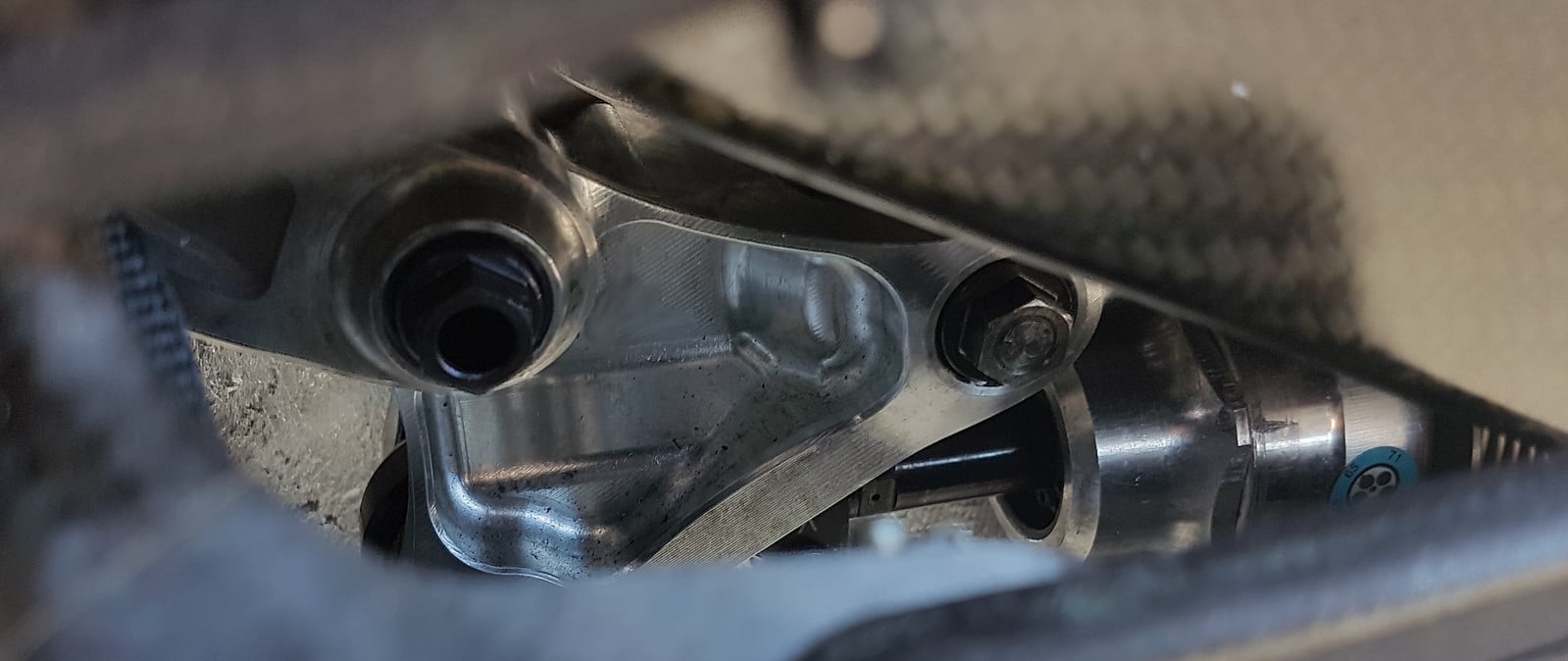
A photo that allows you to better understand how this mechanism works
Two things are visible in the photo. First, the piston. This is clearly an actuator, the mechanism that allows the length of the suspension linkage to be changed before the ride, lowering the rear of the bike. The second, on the right, is a spring which presumably activates the return mechanism.
When the rider turns the lever, this should move the push rod inside the cylinder to shorten the linkage and lower the rear. This, in turn, should put the spring under tension, which releases the mechanism during hard braking.
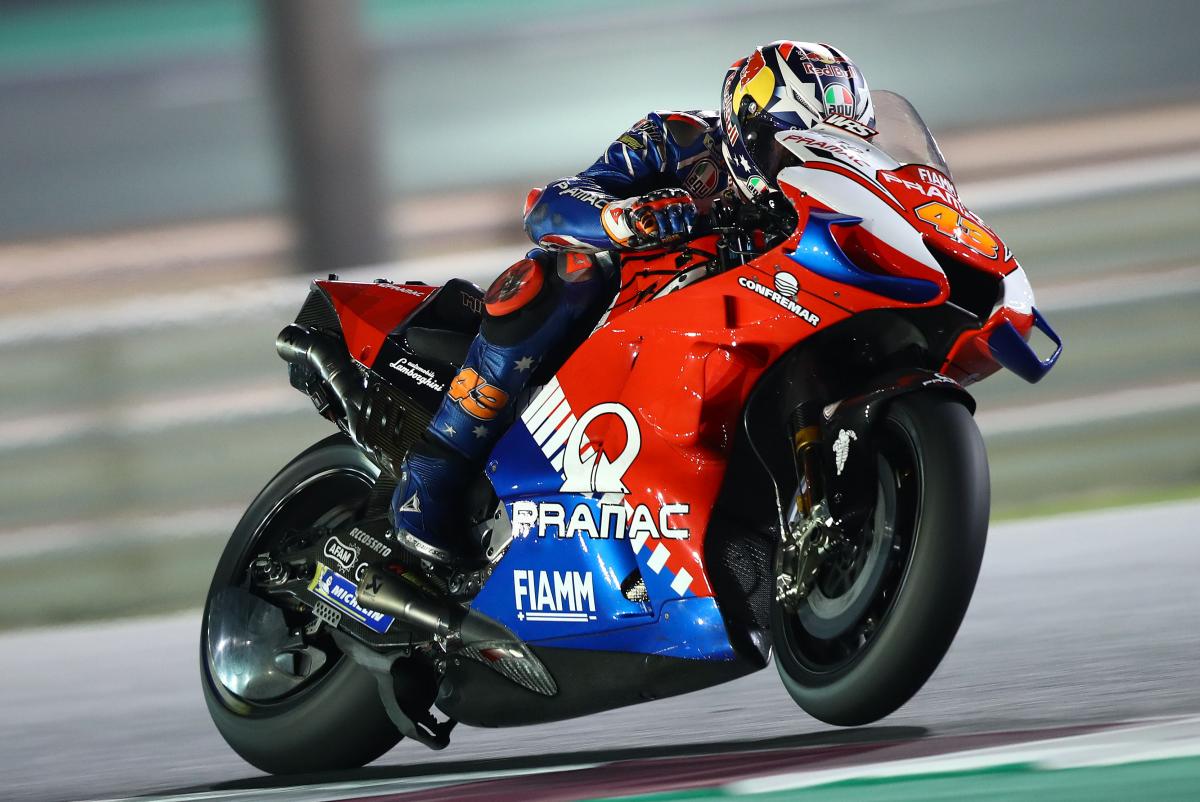
Jack Miller uses the device here in full acceleration
While the device is clearly the result of some very innovative thinking, it also raises some questions. The link plays a vital role in managing suspension height and is subject to significant forces. After releasing the device when braking to enter the first corner, the system should return to the position it was configured for and remain there. It must not move, which changes the height of the motorcycle set during testing. This means that Ducati must be certain that the device will lock up again after its release.
Adding this actuator to the suspension linkage opens up some interesting possibilities. As we had already discussed recently, it is possible to adjust the height of the motorcycle during the race. However, as electronic ride height adjustment is explicitly prohibited, it can only be adjusted manually, or via mechanical/hydraulic adjusters.
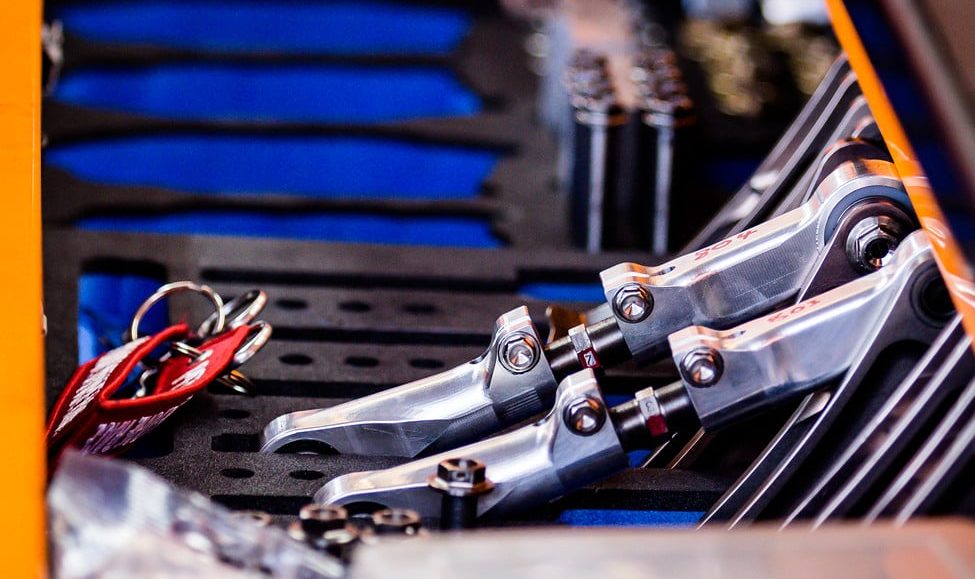
This is what a standard suspension link looks like (Photo credit Tom Morsellino)
We understand why all manufacturers are now interested in it, because in addition to being useful at the start, this device allows you to be more aerodynamic in a straight line, and to gain a few precious km/h which will make the difference compared to your opponents.












